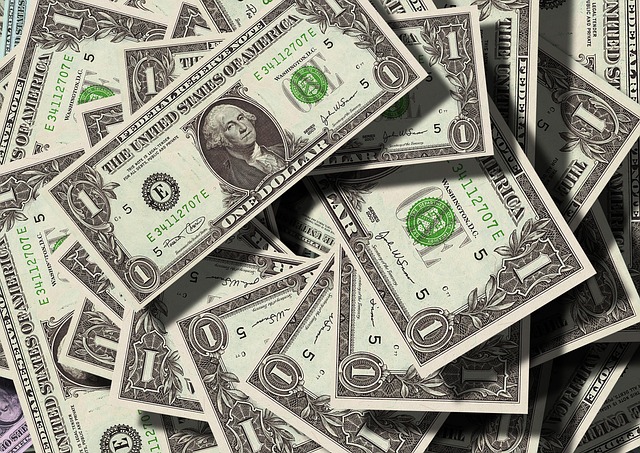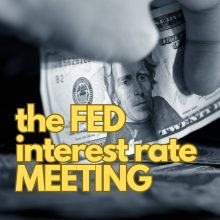The US dollar weakens in response to the Fed’s meeting and future rate hikes
Have you noticed that the US dollar has been weakening recently? Well, it’s all because of the Federal Reserve’s latest meeting and the possibility of future interest rate hikes. In fact, the Dollar Index, which tracks the greenback against other currencies, is down 0.1%. So, what exactly happened at the Fed’s meeting? They raised interest rates by 25 basis points, showing confidence that the US won’t experience a recession this year. But now, our attention is turning to the European Central Bank, which is expected to raise rates as well.
In the meantime, inflation remains high in the eurozone, but growth is slowing down. This is causing the yen to edge higher ahead of the Bank of Japan’s meeting. On the other hand, the pound and the Australian dollar are actually strengthening against the US dollar. Even USD/CNY is down 0.1%. All in all, it seems that the US dollar is continuing to weaken due to the weakness inspired by the Federal Reserve. Want to learn more about this? Stay tuned for the rest of the article!

The US dollar weakens in response to the Fed’s meeting and future rate hikes
The US dollar is currently experiencing a weakening trend following the recent meeting of the Federal Reserve and the possibility of future interest rate hikes. This decline is evident in the Dollar Index, which tracks the performance of the greenback against a basket of other major currencies and is currently down 0.1%.
The impact of the Federal Reserve’s latest meeting on the US dollar
During its latest meeting, the Federal Reserve took the decision to raise interest rates by 25 basis points, bringing the benchmark rate to a range of 2.25% to 2.50%. This move was largely anticipated by the market and reflects the Federal Reserve’s confidence in the strength of the US economy. However, it also indicates the potential for future interest rate hikes, which has contributed to the weakening of the US dollar.
The possibility of future interest rate hikes affecting the US dollar
The Federal Reserve’s decision to raise interest rates and its indication that it does not expect a US recession this year has raised expectations of further rate hikes in the future. These expectations have put pressure on the US dollar as investors anticipate higher yields in other currencies. This has led to a decline in demand for the greenback, further driving its weakening trend.
The Dollar Index and its decline
The Dollar Index is a measure of the US dollar’s strength against a basket of six major currencies, including the euro, Japanese yen, British pound, Canadian dollar, Swedish krona, and Swiss franc. This index provides a useful gauge of the US dollar’s overall performance in the forex market.
Currently, the Dollar Index is down 0.1% as a result of the Federal Reserve’s meeting and the possibility of future rate hikes. This decline reflects the weakening of the US dollar against the currencies included in the index.
The interest rate hike by the Federal Reserve
The Federal Reserve’s decision to raise interest rates by 25 basis points was based on several factors. Firstly, the central bank’s assessment of the US economy indicated a positive outlook, with strong employment numbers and steady economic growth. This encouraged the Federal Reserve to pursue a gradual tightening of monetary policy.
Secondly, the Federal Reserve deemed it necessary to maintain the inflation rate close to its 2% target. By raising interest rates, the central bank aims to keep a lid on inflationary pressures in the economy. This decision, however, has contributed to the weakening of the US dollar as investors seek higher yields in other currencies.
The reasoning behind the interest rate hike
The Federal Reserve’s decision to raise interest rates was primarily driven by its mandate to maintain price stability and maximum employment. With the US economy performing well and inflation levels in check, the central bank saw it fit to raise rates in order to prevent overheating of the economy.
Additionally, the Federal Reserve’s decision to raise rates is a reflection of its confidence in the strength of the US economy. By increasing rates, the central bank signals its belief that the economy can withstand higher borrowing costs, which is generally seen as a positive sign for the currency.
The expected effects on the US dollar
The interest rate hike by the Federal Reserve, coupled with the indication of future rate hikes, has put the US dollar under pressure. The expectation of higher yields in other currencies has led to a decline in demand for the greenback, ultimately weakening its value.
Furthermore, the potential for future rate hikes by the Federal Reserve may lead to increased volatility in the forex market, as investors closely monitor monetary policy decisions and their impact on the US dollar.
The absence of a US recession
One noteworthy aspect of the Federal Reserve’s latest meeting was its statement that it does not expect a US recession this year. This statement is significant as it underscores the central bank’s optimism regarding the state of the US economy. The absence of an anticipated recession provides further support for the US dollar, albeit in a weakened state due to the potential for future rate hikes.
The implications for the US dollar
The Federal Reserve’s statement on the lack of expected US recession has implications for the US dollar. It suggests that the central bank believes the US economy is strong enough to withstand potential headwinds and does not require any additional monetary easing. This can be interpreted as a positive signal for the currency, despite its current weakening trend.
The focus on the European Central Bank
With the Federal Reserve’s meeting behind us, market attention has now turned to the European Central Bank (ECB). It is widely anticipated that the ECB will raise interest rates by 25 basis points in the near future. This potential rate hike by the ECB could have further implications for the US dollar and its weakening trend.
The anticipation of a rate hike by the European Central Bank
The European Central Bank’s potential rate hike is based on its assessment of the eurozone’s economic performance. While inflation remains elevated, growth in the eurozone has been slowing. This combination has prompted speculation that the ECB may raise rates in an effort to balance these factors.
The expected impact on the US dollar
A rate hike by the European Central Bank would likely attract investors seeking higher yields, which could further weaken the US dollar. The potential for higher interest rates in the eurozone would make the euro a more attractive investment, contributing to the US dollar’s decline.
Inflation and growth in the eurozone
Currently, inflation levels in the eurozone remain elevated. While this could justify a rate hike by the European Central Bank, the slowdown in growth within the eurozone complicates the decision-making process. The combination of these factors has implications for the US dollar and its weakening trend.
The current state of inflation in the eurozone
Inflation in the eurozone has remained relatively high, with the latest figures showing an annual increase in consumer prices of 2.1%. This exceeds the ECB’s target of keeping inflation below, but close to, 2%. The presence of elevated inflation levels supports the case for a rate hike by the ECB, which could further weaken the US dollar.
The slowdown in growth
At the same time, growth in the eurozone has been slowing. The latest data indicates that the eurozone economy expanded by 0.1% in the third quarter, down from 0.4% in the previous quarter. This slowdown in growth poses a challenge for the ECB when considering a rate hike, as it may lead to a cautious approach that could impact the US dollar.
The implications for the US dollar
The combination of elevated inflation and a slowdown in growth in the eurozone creates uncertainty regarding the potential impact on the US dollar. While a rate hike by the European Central Bank may attract investors seeking higher yields, the presence of economic headwinds could temper the currency’s strengthening trend.
The Bank of Japan’s meeting and the yen
In addition to the Federal Reserve’s meeting and the focus on the European Central Bank, the market is also anticipating the Bank of Japan’s upcoming meeting. The Bank of Japan is not expected to raise rates, but any developments in its monetary policy could have implications for the yen and, consequently, the US dollar.
The market anticipation of the Bank of Japan’s meeting
While the Bank of Japan is not expected to raise interest rates, any shifts in its monetary policy or updates on its economic outlook could impact the yen. These developments will be closely monitored by investors and could influence the direction of the US dollar.
The impact on the yen
The anticipation of the Bank of Japan’s meeting has already had an impact on the yen. The currency is edging higher as investors position themselves ahead of any potential announcements. This upward movement in the yen could contribute to the weakening of the US dollar.
The potential effects on the US dollar
The potential effects of the Bank of Japan’s meeting on the US dollar will depend on the central bank’s decisions and statements. If the Bank of Japan takes a more accommodative stance or expresses concerns about the economy, it could lead to a further weakening of the US dollar.
The strengthening of the pound and the Australian dollar
While the US dollar is weakening against several major currencies, the pound and the Australian dollar have been showing strength in recent times. This strength can be attributed to several factors specific to each currency.
The reasons behind the pound and Australian dollar’s strength
The pound has strengthened in response to positive developments regarding Brexit. The recent agreement on the terms of the UK’s withdrawal from the European Union has alleviated some of the uncertainty surrounding the process. This has boosted confidence in the pound and contributed to its strength against the US dollar.
Similarly, the Australian dollar has experienced strength due to positive economic data and rising commodity prices. Improved economic indicators and increased demand for commodities have supported the Australian dollar’s upward trajectory against the US dollar.
The implications for the US dollar
The strengthening of the pound and the Australian dollar against the US dollar adds to the overall pressure on the greenback. As these currencies continue to perform well, investors may choose to allocate their funds in these currencies rather than the US dollar, contributing to the decline in demand for the greenback.
The decline of USD/CNY
Another significant development in the forex market is the decline of USD/CNY. The exchange rate between the US dollar and the Chinese yuan has experienced a decrease of 0.1%.
The current decline of USD/CNY
USD/CNY has been declining recently due to a combination of several factors. Firstly, ongoing trade tensions between the United States and China have put pressure on the US dollar. Secondly, the Chinese government’s efforts to stabilize its currency by supporting its value and managing its depreciation have resulted in the decline of USD/CNY.
The factors contributing to the decrease
Trade tensions between the United States and China have strained the relationship between the two countries and sparked concerns about the escalation of a trade war. The uncertainty surrounding these tensions has diminished investor confidence in the US dollar, leading to a decline in demand for the currency.
Additionally, the Chinese government’s efforts to stabilize the yuan highlight its commitment to maintaining a stable currency. By supporting the value of the yuan and managing its depreciation, the Chinese government is exerting downward pressure on USD/CNY, contributing to its decline.
The consequences for the US dollar
The decline of USD/CNY has implications for the US dollar, as it is reflective of the weakening trend of the greenback. As trade tensions persist and the Chinese government continues to stabilize its currency, the US dollar may face further pressure and experience a decline against the Chinese yuan.
Conclusion
In conclusion, the US dollar is currently experiencing a weakening trend due to the Federal Reserve’s meeting and the possibility of future interest rate hikes. The Dollar Index is down 0.1%, reflecting the overall decline in the value of the greenback against a basket of major currencies. Additionally, the focus on other central banks such as the European Central Bank and the Bank of Japan, as well as the strengthening of the pound and the Australian dollar, further contribute to the pressure on the US dollar. The decline of USD/CNY also plays a role in the weakening of the US dollar. Overall, the Federal Reserve’s meeting and the expectation of future rate hikes are key factors impacting the US dollar’s current state, and it will be crucial to monitor future developments in order to gain a deeper understanding of the currency’s trajectory.






